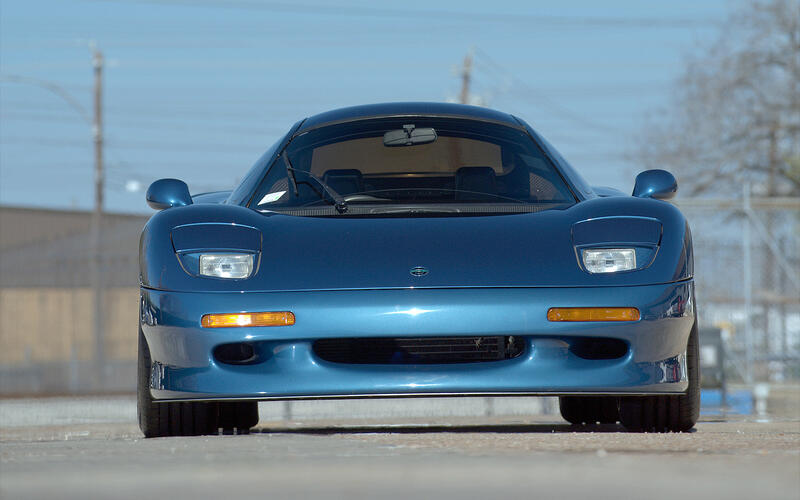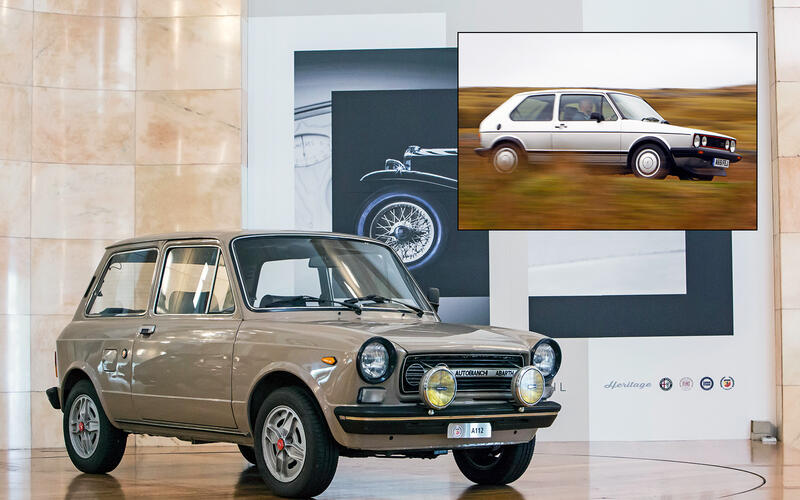 Slide of
Slide of
One of Winston Churchill’s more prescient predictions was that “history will be kind to me, for I intend to write it.”
And it was, no doubt in some part because he did. Few would argue that Churchill was less than a very great man, but I expect his reputation today would be rather different if, despite his efforts, he’d not been able to hold back the dark forces that had swept across Europe. History is written by the victors. If you don’t believe me, think back to your history lessons at school and remember how many battles you learned about that were actually lost. Not many, I’ll wager.
So it is with cars. Those we most readily remember tend to be the most successful, not necessarily the most significant. Often they are cars that learned from the mistakes of the true pioneers and used that experience to secure their place in history, while the real originals were overshadowed, some almost entirely lost in the mists of time. So here are 10 examples as my attempt to redress the balance just a little:
 Slide of
Slide of
Hot Hatchback
Actual pioneers: 1971 Autobianchi A112 Abarth, Simca 1100Ti
Perceived pioneer: 1975 Volkswagen Golf GTI
The what? Autobianchi was a Fiat offshoot, focused on selling Fiat-based products but with their own looks and states of tune. The A112 was launched in 1969 as a three-door hatch running a Fiat 127 powertrain, but an Abarth version (pictured) arrived in 1971 with a bigger engine and a hike from 40bhp to 58bhp.
 Slide of
Slide of
Hot Hatchback
Not hot enough for you? Okay, the Golf still doesn’t deserve the crown because in 1974 Simca launched the 1100Ti (pictured), a car that subscribes fully to hot hatch conventions, with a meaningfully tuned 1.3-litre engine that lifted power from under 60bhp to over 80bhp. It looked the part, too, with alloy wheels, a blacked-out grille and, oh the joy of it, six front headlights. It could get past 100mph and reach 60mph in about 12 secs - not at all bad for 1974.
Bear in mind, too, that the Alfasud would have claimed this title back in 1971 had it not taken over a decade for it to occur to Alfa Romeo to fit it with a hatchback.
 Slide of
Slide of
SUV
Actual pioneer: 1941 Willys MB
Perceived pioneer: 1948 Land Rover
You’ll know the Willys MB by its Jeep nickname, although it would take the rest of this magazine to examine the competing theories about where that came from. The car is simpler to explain and was the result of an order put out by the US military for a highly maneuverable, lightweight, all-purpose vehicle.
The contest was won by Willys. So spectacularly fit for purpose was the rugged Jeep that Dwight D Eisenhower would famously credit it with the landing craft and Dakota aeroplaone as the three tools that won World War II.
Rover was far more interested in winning the peace and saw that such a car could be used by almost anyone needing to go anywhere with difficult access. The Land Rover (inset) was hastily rushed into production as a stop-gap until something better could be designed and stayed in build for nearly 70 years.
 Slide of
Slide of
Luxury SUV
Perceived pioneer: 1970 Range Rover
Actual pioneer: 1966 Jeep Super Wagoneer
In these days where SUVs are the new norm and super-luxury versions so de rigueur that even Rolls-Royce makes one, it’s hard to think back to a time when a luxury SUV was no more or less than a contradiction in terms. And then the Range Rover came along and changed all of that.
Or did it? Actually, just as Jeep beat Land Rover to the off-roader, so too was it several years ahead in making a rather more luxurious version. As early as 1962 you could buy a Wagoneer with a smooth six-cylinder engine and even independent front suspension. But the Super Wagoneer of 1966 was something else - an SUV that was deliberately, determinedly, unapologetically plush.
Four years before the Range Rover (inset) went on sale, here was an SUV with a 5.4-litre V8 engine, automatic gears, power steering, air conditioning and leather seats. Jeep called it ‘The Most Unusual Luxury Wagon Ever Built’. In fact, it was the right idea at the wrong time: it was built in tiny numbers and is now almost completely forgotten.
 Slide of
Slide of
Mid-engined road car
Perceived pioneer: 1966 Lamborghini Miura
The Lamborghini Miura was unveiled to gasps from the crowd attending the 1966 Geneva motor show, not least because it placed its engine directly behind the driver, like a Formula 1 car. Had they been paying attention, however, they would have realised that Lamborghini was not the first to put this idea into road-going application, nor indeed even second.
 Slide of
Slide of
Mid-engined road car
Actual pioneer: 1962 René Bonnet Djet
The first was amusingly entitled René Bonnet Djet of 1962, which became the rather more-dreary sounding Matra Djet in 1964. For the time, its spec was extraordinary: mid-engined motor, disc brakes all round, double wishbone suspension at every corner and an all-up weight of less than 700kg. Sadly, its sky-high pricing meant it never reached the audience its talent deserved.
 Slide of
Slide of
Mid-engined road car
Runner-up pioneer: 1964 De Tomaso Vallelunga
Nor did the second mid-engine road car, the 1964 De Tomaso Vallelunga, but largely because it was never properly developed and was replaced by the rather rortier but still rough around the edges Mangusta in 1968.
 Slide of
Slide of
Turbocharged car
Perceived pioneers: 1973 Porsche 911 Turbo and BMW 2002 Turbo
Was the BMW 2002 Turbo (pictured) or Porsche 911 Turbo (inset) the first turbocharged road car? Both made their debuts at the 1973 Frankfurt motor show. Well, I think it can be convincingly argued that the BMW was first into production, but in fact it’s a trick question. The actual answer is the Oldsmobile Jetfire.
 Slide of
Slide of
Turbocharged car
Actual pioneer: 1962 Oldsmobile Jetfire
Even when the Jetfire was new in 1962, turbocharging was nothing new in cars. Indeed, if you want some weapons-grade automotive trivia, drop into conversation the fact that pole position for the 1952 Indianapolis 500 was secured by a car with a turbodiesel engine. Yes, that’s diesel. But the Jetfire was first to bring the technology to the public road, alongside the Chevrolet Corvair Monza.
 Slide of
Slide of
Turbocharged car
The Jetfire was an Oldsmobile Cutlass with a Garrett AiResearch turbo attached to its all-alloy 3.5-litre V8 ‘Turbo-Rocket’ motor, raising its power 40% to 215bhp. Sadly, to work properly it needed not only gasoline but a brew of alcohol and distilled water. The customer didn’t like the added complication and the Jetfire died with fewer than 10,000 made.
 Slide of
Slide of
Carbonfibre road car
Perceived pioneer: 1994 McLaren F1
Actual pioneer: 1990 Jaguar XJR-15
I wish to take nothing away from the McLaren F1 (pictured inset), for it was the first road car conceived as such to feature an entirely carbonfibre tub and body. But carbonfibre had been used in road cars before (notably the Ferrari F40) and one car snuck under the wire to become the first all carbonfibre road car – the Jaguar XJR-15.
Is it cheating because it was based on the XJR-9 Group C racing car, so was arguably a road-going model of a pre-existing racing car? Maybe, but the fact remains that some were built and registered for road use alone.
I never drove one because I couldn’t fit in, but by most accounts I’ve read it was a pretty evil thing to drive, especially if you tried to go fast. But such is the way with pioneers: you can get there first or you can get it right - rarely do those two aspiration arrive hand in hand.
 Slide of
Slide of
Monocoque car
Perceived pioneer: 1934 Citroën 7CV ‘Traction Avant’
When Colin Chapman created the first fully stressed F1 ‘tub’ for his 1962 Lotus 25, he changed the face of racing. Lighter and stronger than the spaceframes that had preceded it, the choice to others was adapt or die. Yet unitary construction had been in road cars for years, even more of them than most people think.
The Citroën 7CV Traction Avant (pictured) is famous for pioneering three things: front-wheel drive, independent front suspension and the monocoque chassis. And it was actually first to… precisely none of them. So far as the chassis was concerned, the real pioneer came 12 years earlier in the form of the Lancia Lambda.
 Slide of
Slide of
Monocoque car
Actual pioneer: 1922 Lancia Lambda
The way it was built was just one of the reasons the Lambda was a true pioneer (it also beat the Citroën to independent front suspension), but its construction technique, where the entire body bears structural loads, was one of the most important developments in road car history, making cars lighter and stronger, and therefore safer, quicker, more fuel efficient and better to drive.
 Slide of
Slide of
Front-wheel drive
Perceived pioneer: 1959 Mini
You can argue the toss about the perceived pioneer here, because I know many of you will know the aforementioned Citroën Traction Avant used front-wheel drive 25 years before the Mini turned into the world’s most popular configuration for small cars. But neither was first. It was Alvis.
In the 1920s Alvis was a manufacturer of respected, high-quality sporting cars of all shapes and sizes. But in 1928, it did something quite unexpected. Various manufacturers had toyed with the idea of all-wheel drive since the turn of the century, but Alvis put its car into production.
 Slide of
Slide of
Front-wheel drive
Actual pioneer: 1928 Alvis ‘Front-wheel Drive’
Intended as both a road-going sports car and a competitive racer, available with and without supercharging, the front-drive Alvis is now an almost forgotten curio of the British motor industry. Ninety years ago, however, it was seriously quick. Who remembers now a little Alvis that came sixth at Le Mans in 1928? Powered by a 1.5-litre motor, the only cars that beat it had over four-litres under their bonnets. Around 150 front-drive Alvises were made and today are a rare and special sight.
 Slide of
Slide of
High performance four-wheel drive car
Perceived pioneer: 1980 Audi Quattro
We all remember how the Audi Quattro transformed our perception of the usefulness of all-wheel drive. No longer was it what you needed to reach some of the most inhospitable places on earth – you could just use it to have fun. Problem is, Jensen had exactly that idea 14 years earlier.
 Slide of
Slide of
High performance four-wheel drive car
Actual pioneer: 1966 Jensen FF
The Jensen FF is perhaps little remembered today, but was a revolution in 1966. The FF stood for Ferguson Formula and reflected the fact it was fitted with Ferguson four-wheel drive, allowing the power of its 6.3-litre Chrysler V8 to be deployed as never before. Ferguson had pioneered the technology on its P99 race car, which remains to date the only four-wheel drive car to win an F1 race, when Stirling Moss won the Oulton Park Gold Cup in 1961.
Sadly, the technology wasn’t cheap and the car couldn’t be built with left-hand drive, so few were made, allowing Audi to pick up the reins and create a new ‘quattro’ sub-brand many years later.
 Slide of
Slide of
Anti-lock brakes
Perceived pioneer: 1978 Mercedes-Benz W116 S-class
Actual pioneer: 1966 Jensen FF
Anti-lock brakes were nothing new even when the Jensen FF turned up in 1966. The Dunlop Maxaret system was already in widespread use in the aircraft industry: because they are heavy and hit the ground at high speed, there is a great propensity for aircraft to skid on landing. Using an anti-skid system not only made them safer in poor weather but meant they could use shorter runways or land with greater loads on board. It also carved a fortune off the tyre bill.
The FF was the first to use the system in a car. It was purely mechanical and required a wheel to lock before hydraulic pressure could be reduced, but it still allowed the brakes to be released and re-applied up to 10 times a second. The Mercedes-Benz system introduced in the W116 S-Class was far more sophisticated, electronically operated through a multi-channel system and was similar in principle to the ABS fitted to cars today. But it was not the first.
Include in Apple News:








































